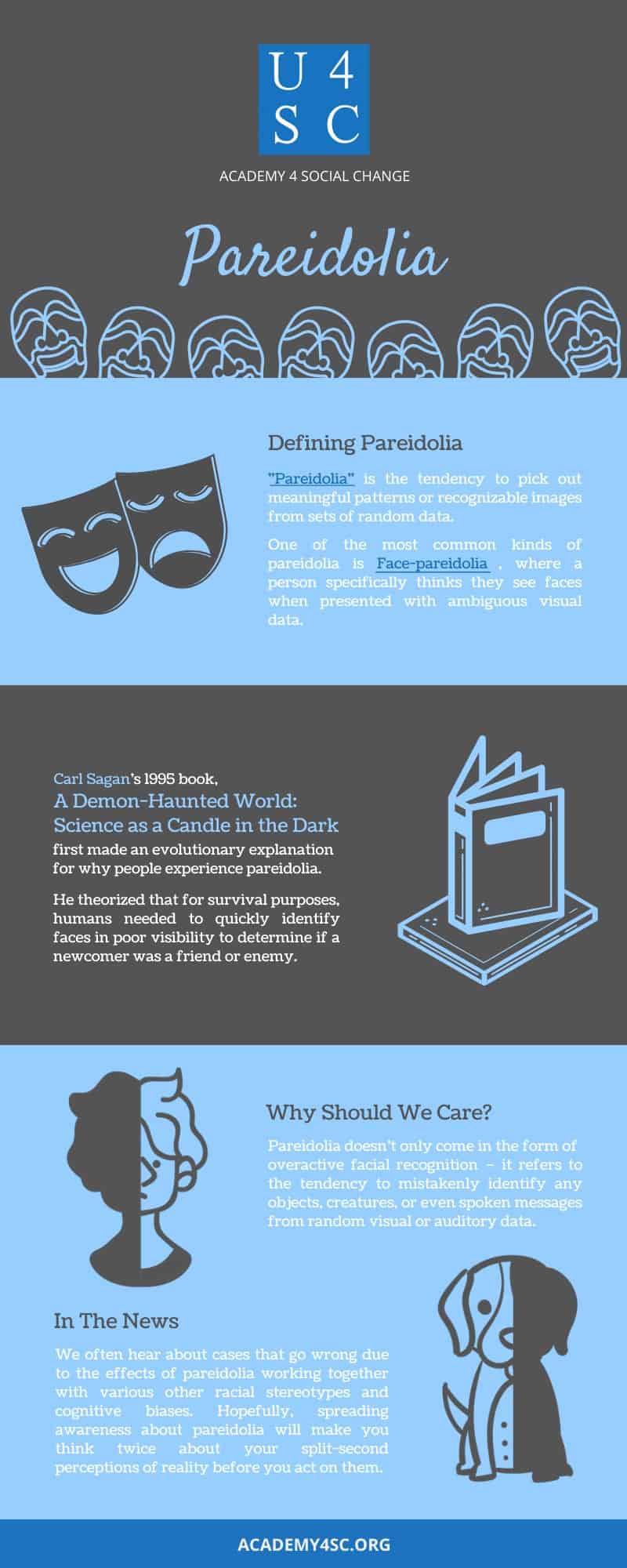Introduction
A grilled cheese sandwich with burn marks, resembling the image of the Virgin Mary, sells for $28,000 on Ebay. A woman makes the news for claiming to see the ghost of a long-dead relative in the fog outside her house. You lie down in the grass on a sunny day and point out a cloud that’s shaped like Darth Vader’s head to your friend. Why do people seem to recognize faces in their surroundings so often?
Here’s Why
Since people are social creatures, their brains are evolutionarily wired to recognize faces, especially other human faces. In human history, it’s been less potentially harmful to be overly cautious because you think you see enemy tribes and predators everywhere than to be completely oblivious to the lion that’s stalking you. Thus, the facial-recognition mechanism tends to be overactive in people, leading them to see things like the Virgin Mary in their grilled cheese sandwiches.
Defining Pareidolia
Pareidolia is the tendency to pick out meaningful patterns or recognizable images from sets of random data. Face-pareidolia is one of the most common kinds of pareidolia, where a person specifically thinks they see faces when presented with ambiguous visual data.
The History
In astrophysicist Carl Sagan’s 1995 book, A Demon-Haunted World: Science as a Candle in the Dark, he first made an evolutionary explanation for why people experience pareidolia. He theorized that for survival purposes, humans needed to quickly identify faces in poor visibility to determine if the newcomer is a friend or enemy. Also, he argued that parents formed stronger bonds of affection with children that easily recognized them than with children who were slow in recognition. Thus, it’s advantageous to have pareidolia and be super perceptive of images that look like faces.
Why Care?
Pareidolia doesn’t only come in the form of overactive facial recognition – it refers to the tendency to mistakenly identify any objects, creatures, or even spoken messages from random visual or auditory data. In the news, we often hear about horrific cases where police open fire on unarmed, innocent black youths, claiming that they thought these adolescents were holding weapons. Some of these cases occur at night, in low lighting and poor visibility, and the victim of police brutality is holding some other object, like a wallet or a pack of Skittles, that is supposedly mistaken for a weapon. These examples show the effects of pareidolia working together with various other racial stereotypes and cognitive biases. Hopefully, spreading awareness about pareidolia will make you think twice about your split-second perceptions of reality before you act on them.



